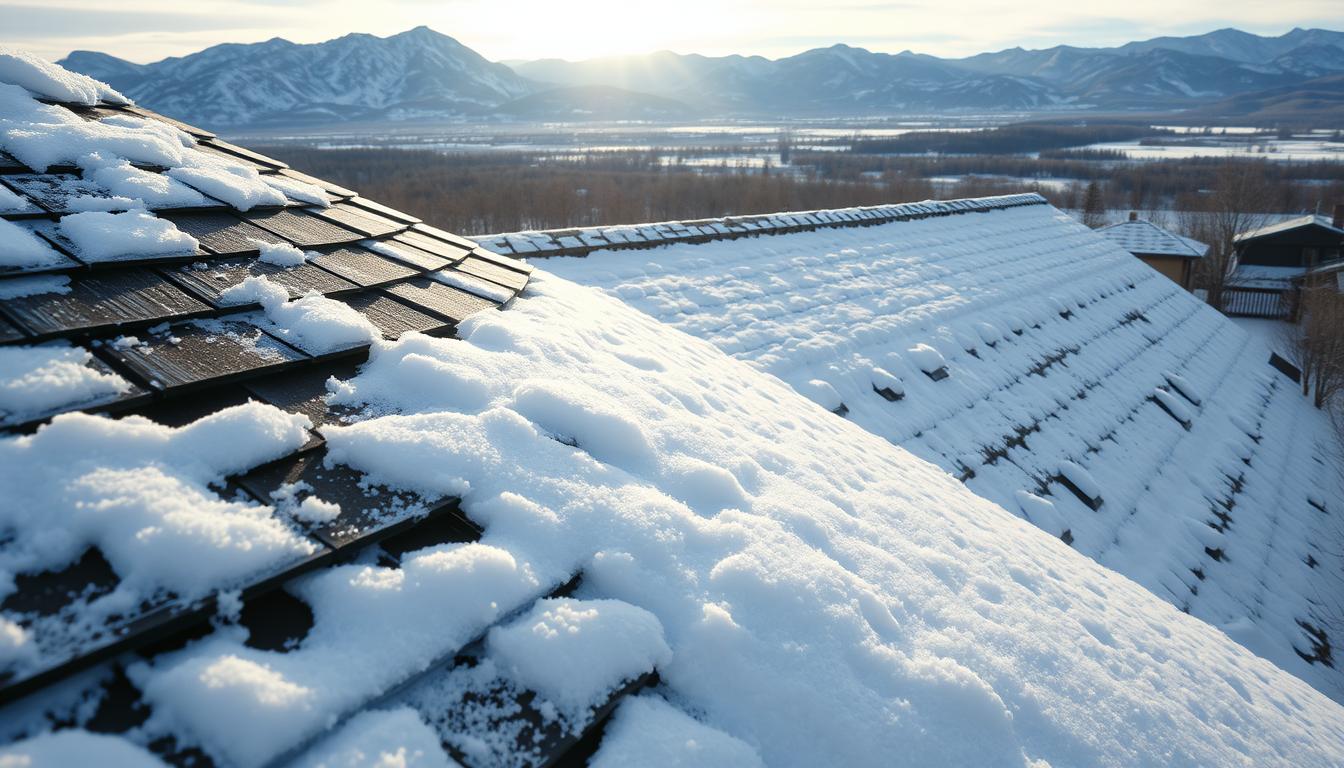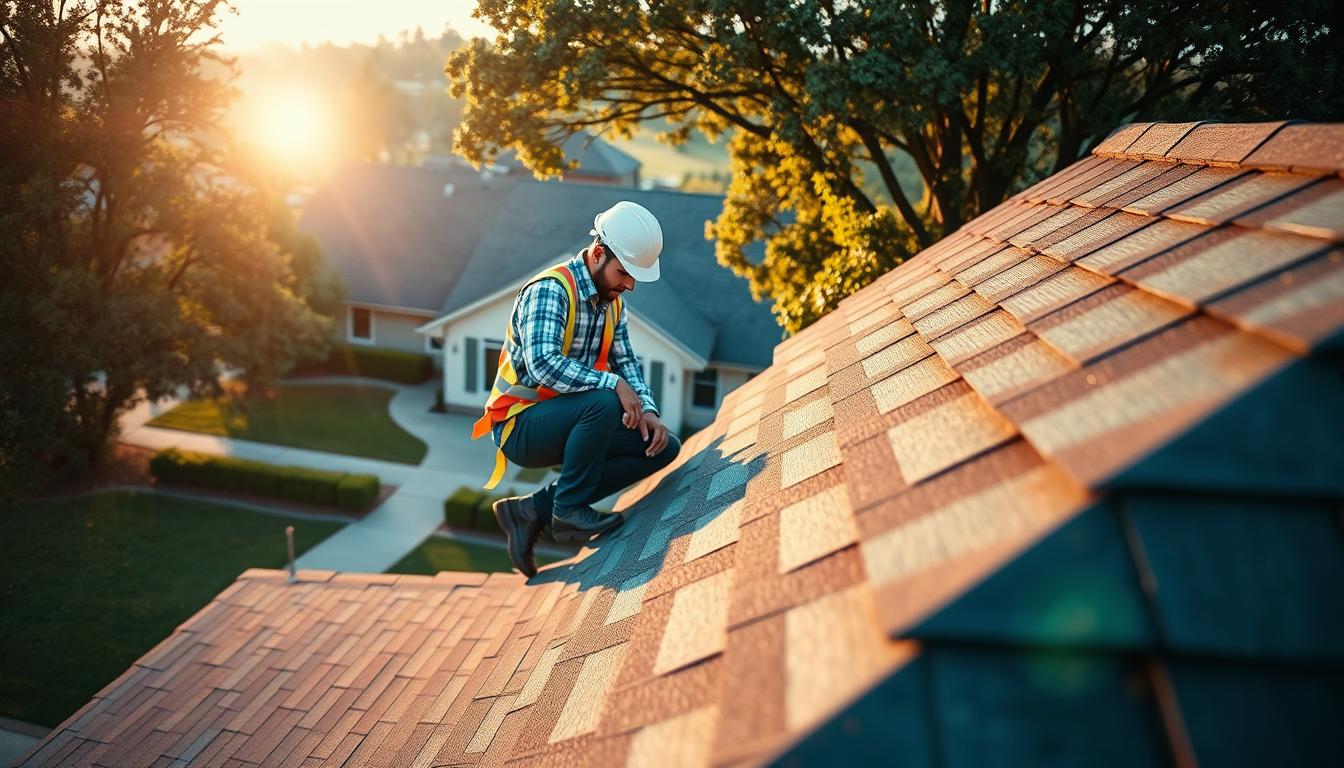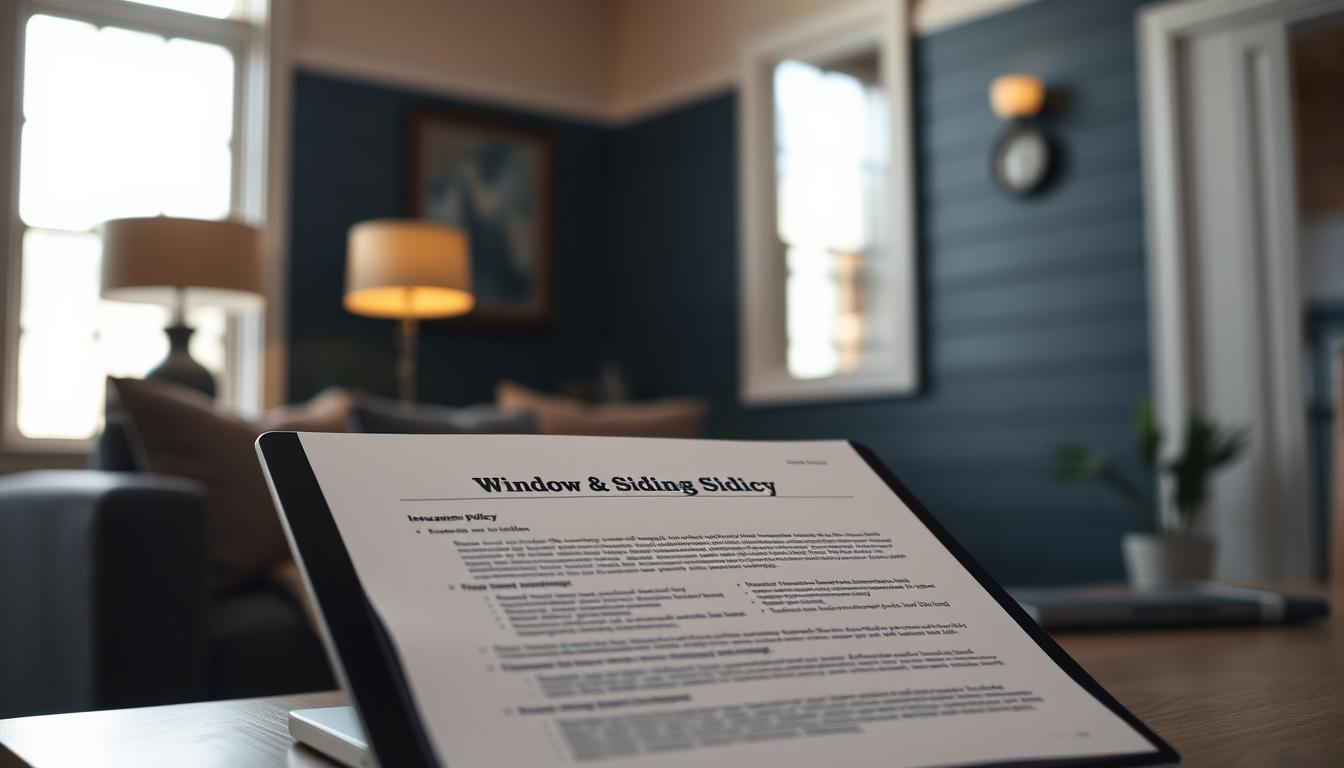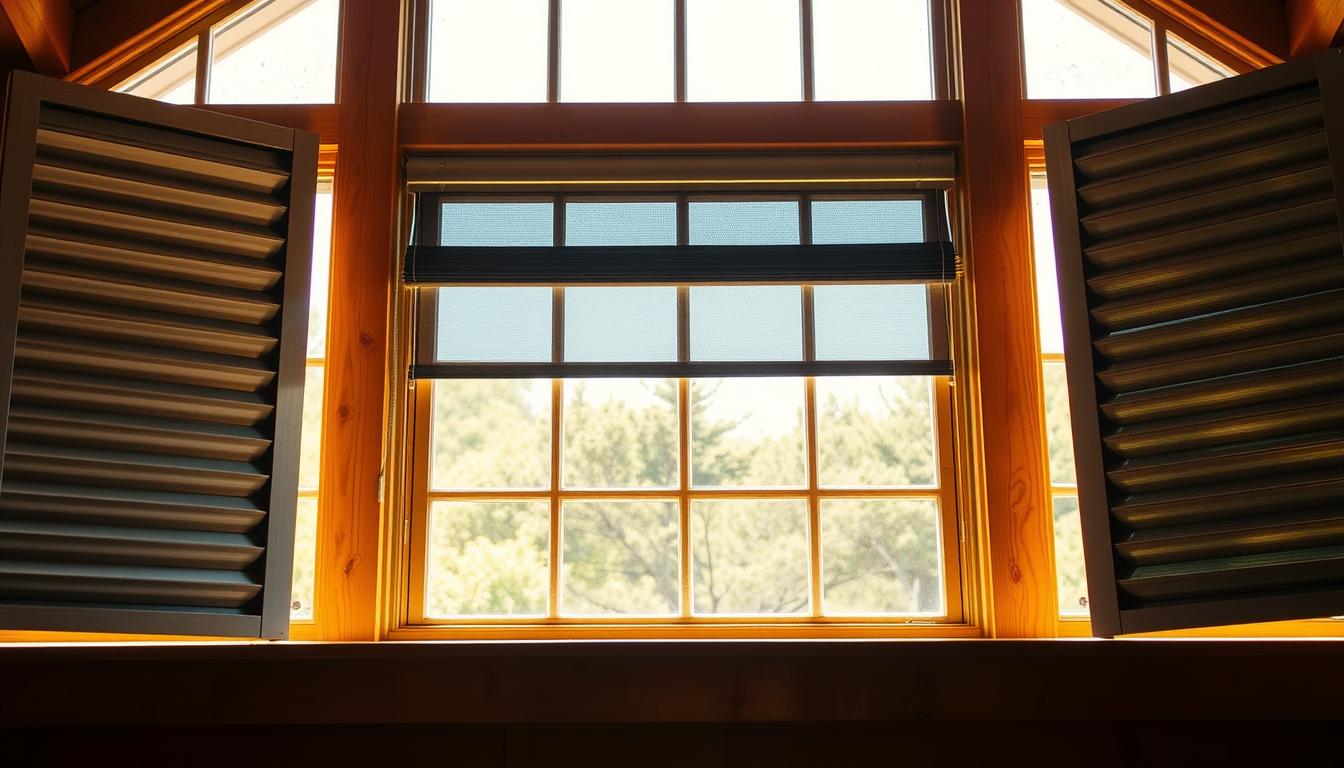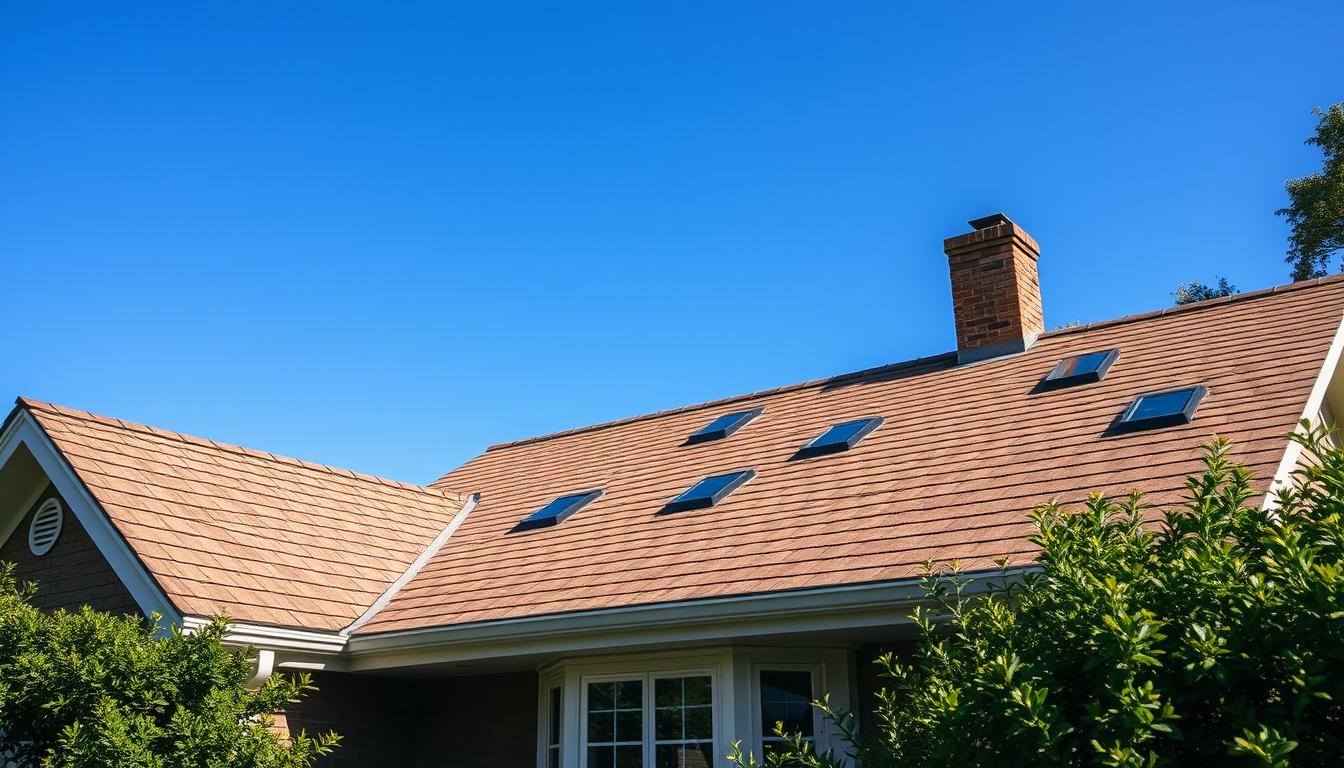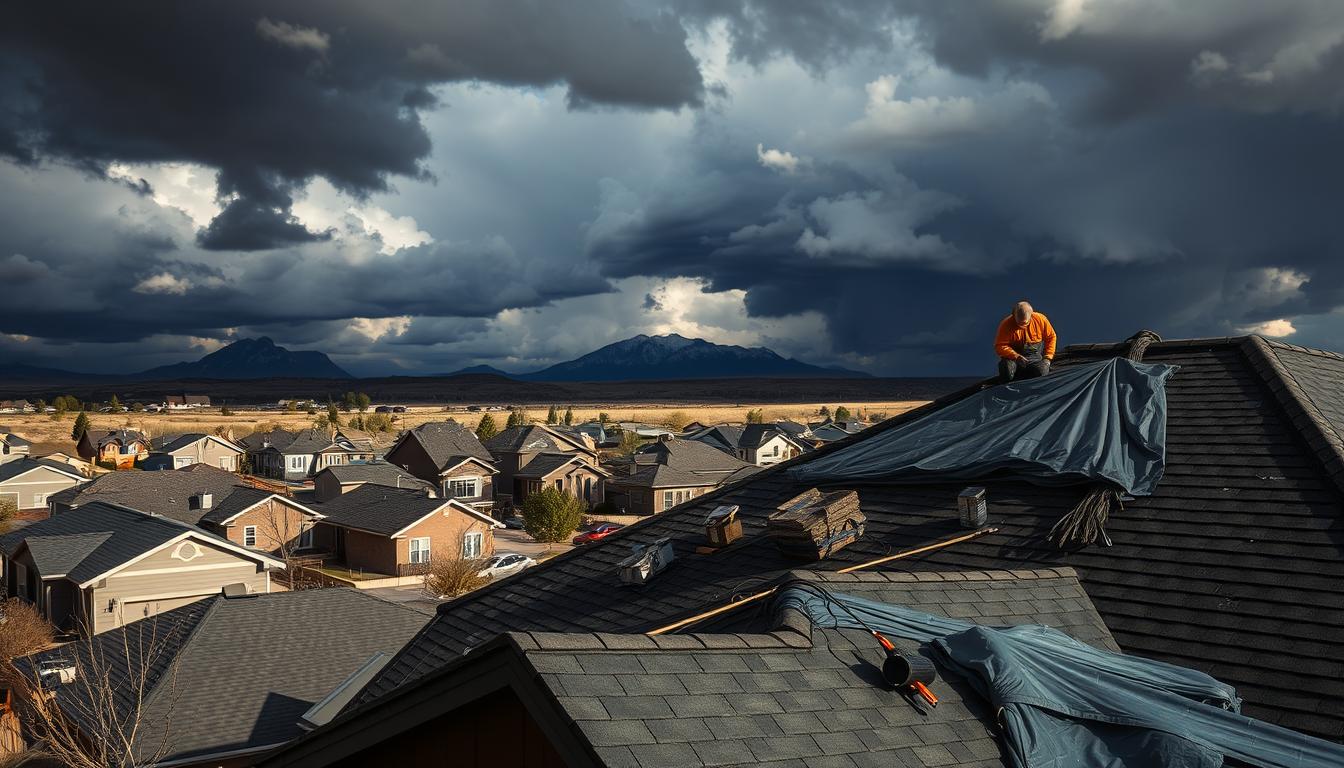Winter weather in Colorado can be tough on homes. Snow and ice can damage roofs, making them unsafe. The Rich Co Inc in Colorado Springs helps keep homes safe during winter.
Winter weather can damage roofs in many ways. Heavy snow and ice dams are big problems. Homeowners need to watch out for these dangers.
Key Takeaways
- Snow and ice can cause significant roof damage
- Packed snow adds substantial weight to residential roofs
- Regular roof inspections are crucial during winter
- Ice dams can lead to interior water damage
- Proper home maintenance reduces winter-related risks
Understanding Snow Roof Damage and Its Risks
Winter weather can turn your roof into a risk zone. Heavy snow and freezing temperatures create a perfect storm. Every homeowner needs to understand these challenges.
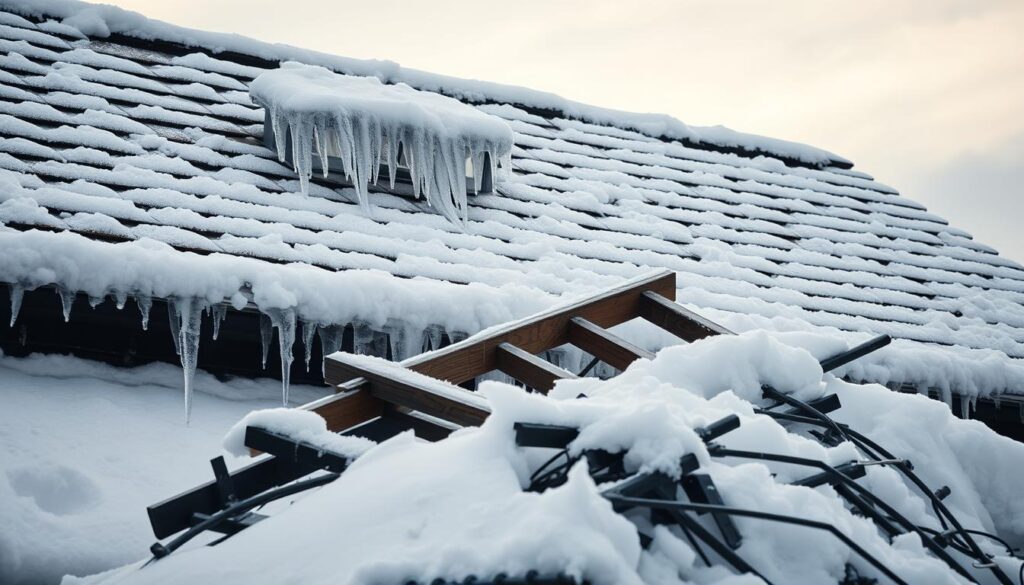
Snow might seem harmless, but it’s a serious threat to your home. Packed snow can weigh up to 20 pounds per cubic foot. This puts a lot of pressure on your roof, increasing the risk of collapse.
Weight Load Concerns
The weight of snow can stress your roof’s structure. Key risks include:
- Excessive snow accumulation leading to potential structural damage
- Increased risk of roof sagging or buckling
- Potential for complete roof collapse in extreme cases
Structural Integrity Issues
Roof damage from heavy snow load is more than just weight. The freeze-thaw cycle can make existing problems worse. This causes:
- Cracked shingles
- Compromised flashing around chimneys and vents
- Potential water infiltration
Common Vulnerable Areas
Some roof areas are more at risk for snow damage. Flat or low-slope roofs are especially vulnerable. Experts say to remove snow before it reaches 12 inches deep.
Proactive maintenance can lower damage risk by up to 70%. Regular checks and quick snow removal are key to protecting your home in winter.
How Ice Dams Form and Their Consequences
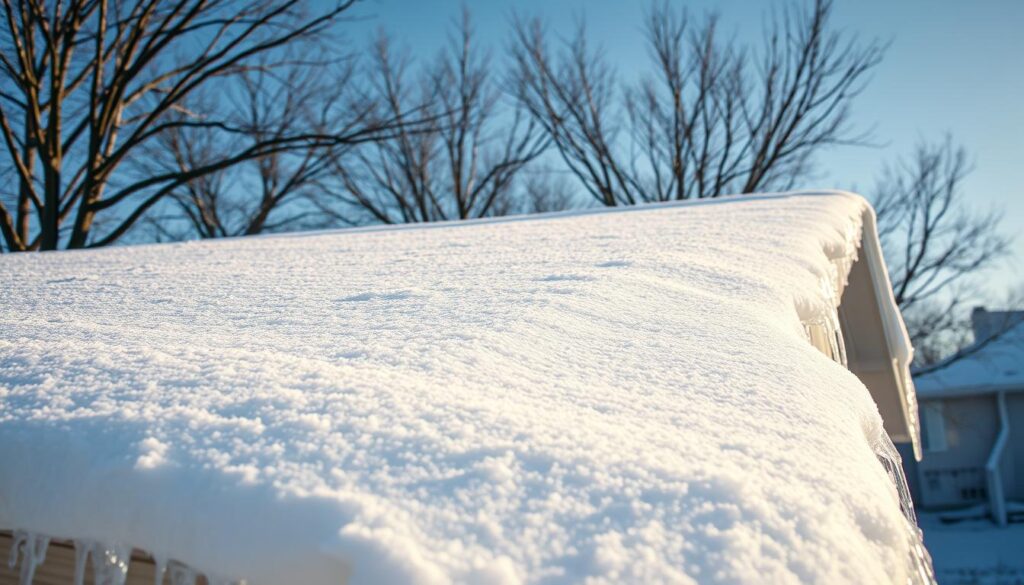
Winter can turn your roof into a danger zone. Ice dams form when snow melts on warmer roof parts and freezes at the colder eaves. This blockage stops water from draining properly.
Ice dams form because of uneven roof temperatures. Several factors contribute to their creation:
- Inadequate attic insulation
- Poor roof ventilation
- Heat loss from interior spaces
- Sustained freezing temperatures
When ice dams cause roof leaks, the damage can be severe. Homeowners might face:
- Water damage to interior walls
- Compromised roof shingles
- Potential mold and mildew growth
- Structural weakening of roof deck
About 70% of homes in colder climates get ice dams in winter. The costs for repairs can be high, from $2,000 to $5,000. Knowing how ice dams form helps protect your home from winter roof problems.
Prevention and Maintenance Strategies
Winter weather can be tough on residential roofs. To protect your home, you need to stay proactive. By using the right prevention strategies, you can avoid costly repairs and insurance claims.
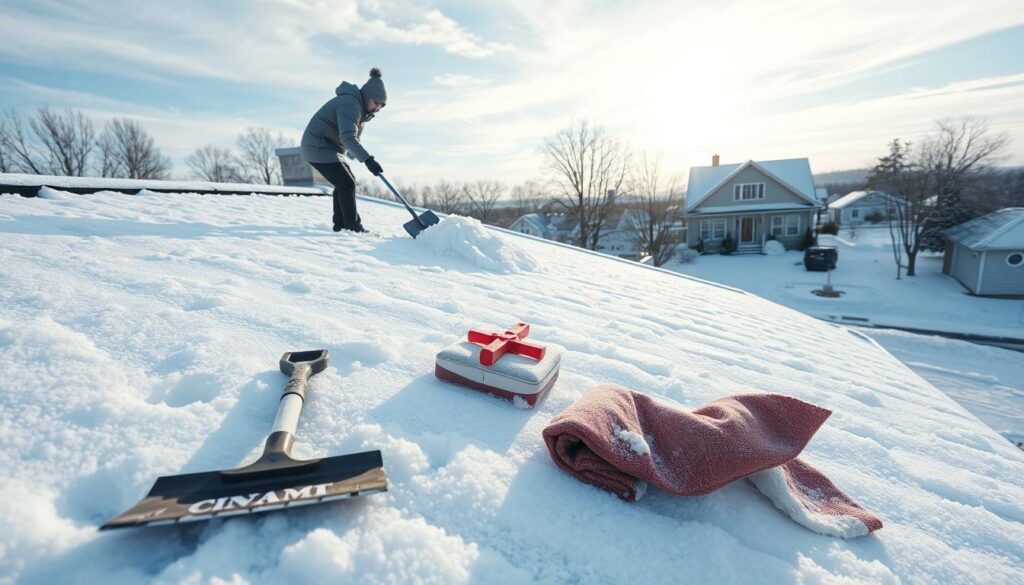
Winter roof maintenance is key. Most roofs can handle 20-30 pounds of snow per square foot. But too much snow can be dangerous. It’s important to watch your roof closely and take steps to keep it safe.
Professional Roof Inspections
Getting your roof checked by a pro is a smart move. Experts say you should get an inspection every year, especially before winter. These checks can spot problems early:
- Find signs of wear and weak spots
- Check if insulation and ventilation are working right
- Get advice on repairs to avoid bigger issues
- Get proof for insurance claims
Proper Attic Ventilation
Good attic ventilation is crucial. It helps prevent ice dams and keeps your roof in good shape. Ventilation does several things:
- Keeps the roof temperature stable
- Stops snow from melting and freezing again
- Reduces moisture
- Lessens the chance of damage
Gutter Maintenance Tips
Keeping your gutters clean is important. It helps stop water and ice dams. Cleaning regularly can cut down ice dam risks by 70%. Here’s how to do it right:
- Clear debris before winter
- Use gutter guards
- Make sure water drains well
- Fix any damaged gutters
Preventive maintenance can save you money on roof repairs and insurance issues.
Different Roofing Materials and Their Winter Performance
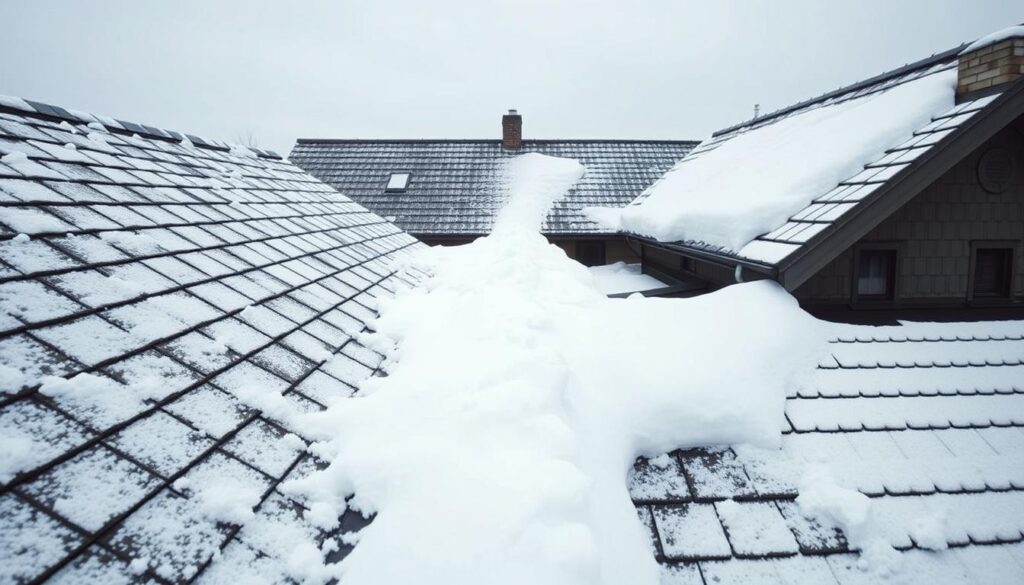
Choosing the right roofing material is key to protecting your home in harsh winters. Each type has its own strengths and weaknesses against snow and ice. Knowing these differences helps you decide on roof replacement.
Let’s look at how different roofing materials perform in winter:
- Metal Roofing: Stands out as a top performer in winter conditions
- Excellent snow-shedding capabilities
- Reduces ice dam formation
- Supports heavy snow loads
- Asphalt Shingles: Most common roofing material
- Improved flexibility in cold temperatures
- Moderate snow resistance
- Vulnerable to ice dam damage
- Synthetic Shingles: Advanced winter protection
- Enhanced elasticity
- Built-in insulating features
- Excellent durability
- Slate Roofing: Premium winter option
- Exceptionally strong
- Potential challenges with heavy snow
- Requires careful installation
When thinking about roof replacement, remember that proper installation and maintenance are crucial. Professional inspections and good attic ventilation can make your roof last longer, no matter the material.
Your local climate and your home’s specific needs should guide your choice of roofing material. Talking to roofing experts can help you pick the best option for long-term protection and energy savings.
Conclusion
Winter weather can really damage your home’s roof in the United States. Knowing the risks and acting early can help shield your roof from snow and ice. Heavy snow and ice can weaken your roof, making it less protective.
It’s important to check your roof often for any damage. Look for signs like water leaks, ceiling stains, or unusual roof shapes. Keeping your roof in good shape involves insulation, clean gutters, and tools like roof rakes.
Getting help from roofing experts is key to protecting your home. Local pros know how to handle your area’s weather. They can keep your roof safe. Don’t wait for big problems to start – act now to save time, money, and stress.
The Rich Co Inc is here to help homeowners in Colorado Springs. Our team can help you keep your roof safe all winter. Call us at (719) 287-5385 for expert advice and peace of mind.

